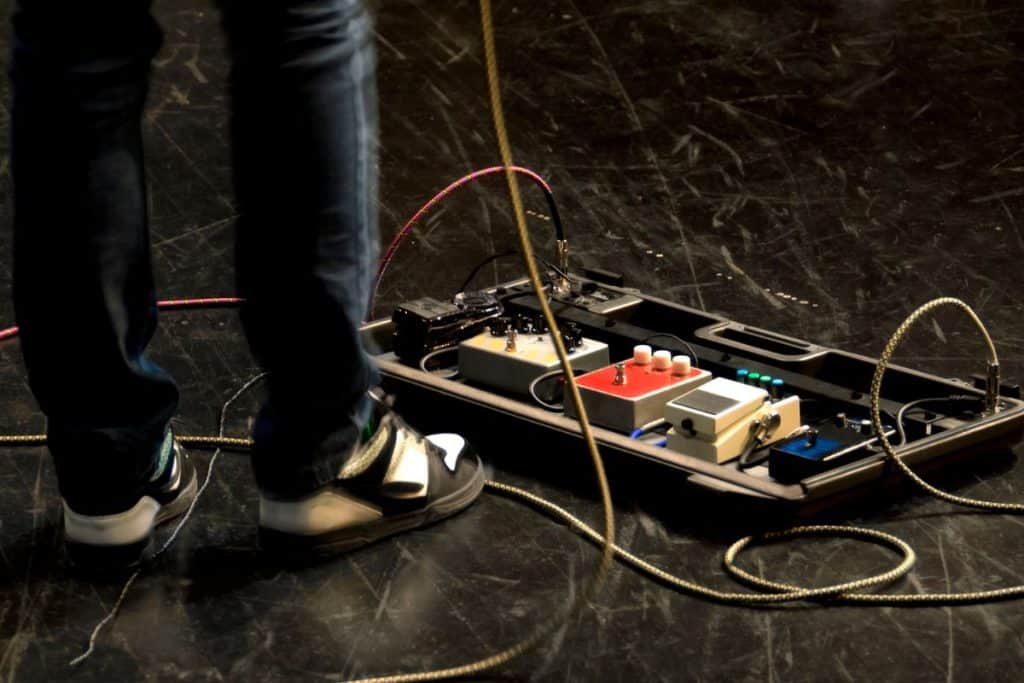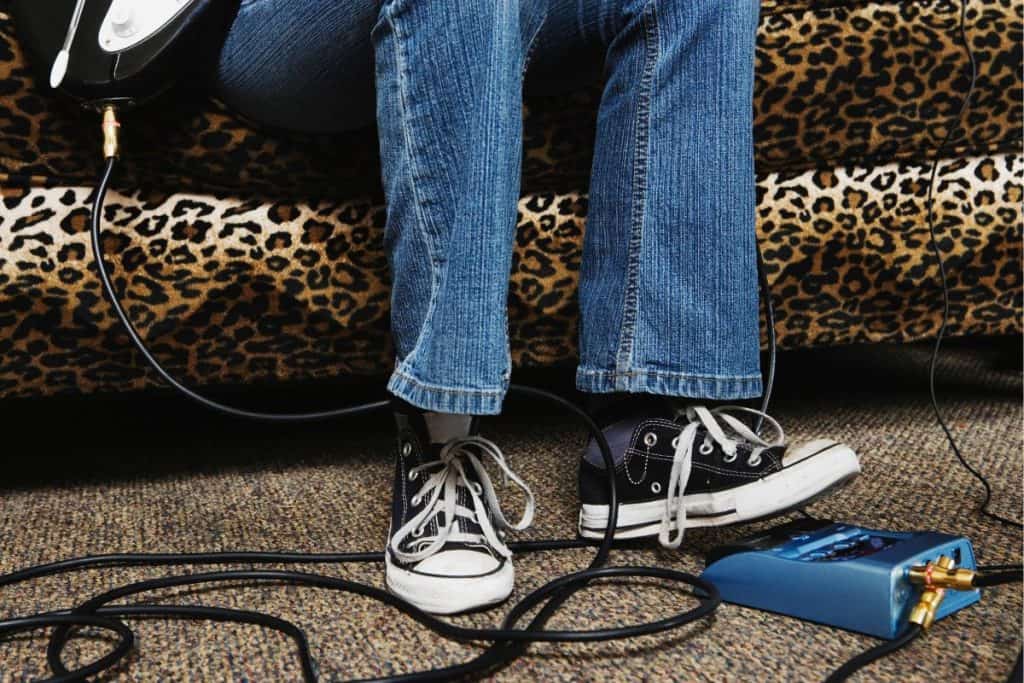Any musician who has been around the block and can handle a guitar knows how important it is to have a good foot pedal as part of your musical toolkit.
These handy pieces of equipment quickly become indispensable once you get the hang of them.

Still, that doesn’t mean that they don’t take a little getting used to at first. And this goes doubly if you are a new guitarist.
If you have no prior experience with either guitars or music equipment in general, it can be hard to understand why an input cable port is different from the output port, or what exactly all the extra dials and buttons do for you and your instrument.
And unfortunately, it is not like you can just give up and call it a day when it comes to learning how to use a foot pedal.
Whilst, not every guitarist or musician will use a foot pedal, we can guarantee that pretty much every successful guitarist, whatever their level of expertise or audience, will at least know the basics of this foundation equipment piece for musicians.
So, if you are serious about taking your guitar skills to the next level, you’re probably going to have to learn how to use them, one way or another.
But that’s okay. Everyone’s a newbie at some point, and all it takes is a little know-how, the right advice, and a healthy dose of patience (the bane of every musician).
And while we can’t do much about that last point, we are more than happy to provide you with a rundown of how exactly to use a foot pedal yourself, to give you that little edge when you start practicing for yourself.
What Is A Guitar Pedal?
Before we go any further, we’ll briefly cover what exactly a guitar pedal is and what it does, so that you can understand why it is useful to know how to use one of these.
A guitar pedal is effectively a piece of audio equipment that allows you to create specific effects with your guitar when it is played, by altering the signals that your guitar sends to the pedal by changing the path that the signal usually takes.
Whilst many people usually use guitar pedals with electric guitars, both acoustic and electric can benefit from the use of a pedal.
Whilst the design can vary between model and brand, all pedals will have at least one input space for your guitar, and an output port for your amp to plug into, to better broadcast the pedal effect to an audience.
The exact effects that guitar pedals can have will vary depending on what pedal you end up using.
Some can have phaser fading effects, whereas others can add or emphasize a flurry that you are performing on your guitar.
Almost all however can be controlled by the guitarist using their foot, hence the name pedal being used for them.
How To Use A Guitar Pedal
Now, we get on to the helpful information that you came here for: How to use one of these things!
The first thing that you should do once you want to use a guitar pedal is to plug it into your guitar and amp.
It is a very simple step and simply requires that you plug in your equipment in the appropriate ports, with the guitar going into the input, and your amp is plugged into the output.

If you normally just plug your guitar straight into an amp, you’ll need an extra guitar able, so that your guitar can be plugged into the pedal, and your pedal can plug into your guitar amp.
And that’s pretty much it for the very basics of using a guitar pedal. It is that simple!
As a word of practical advice, we recommend buying guitar cables that are slightly longer than you’ll think that you’ll need.
You’ll be surprised just how much you might move around on stage!
Using Multiple Guitar Pedals
However, whilst many guitarists will get by very comfortably with using just one pedal, many also enjoy having the variety of effects that using more than one pedal can have.
And, of course, this can get a little more complicated.
You’re going to need more cables to connect the different pedals.
Whilst an ordinary guitar plug will work for this, this can get quite messy if you are using longer cables, which is why many people choose to use what is known as ‘patch cables’, to keep their pedal setups tidy, as well as stop them from becoming a tripping hazard!
Pedals With Multiple Jacks
Most guitar pedals that you can find on the market will be available either as stereo or mono inputs and outputs.
However, many pedals that have multiple ports will have options for both of these and are a great tool for added versatility in your guitar playing.
The pedal will usually label which inputs and outputs can be used for mono and stereo.
Getting Power To Your Guitar Pedals
Of course, your guitar pedal is going to need a power source to work. Most pedals can be powered by one of two options: Using an internal battery, or receiving power from an external source.
Most smaller guitar pedals that are smaller and have fewer inputs can be powered by a simple 9V battery inside itself.
These are great options for guitarists that only use a few pedals, and are perfect for easy transportation.
However, if you perform regularly, you should get used to replace them a lot. External power sources have the opposite issue, where they are great for regular performers, but transporting is more difficult.
Final Thoughts
So, there you have it. With a little knowledge, using a guitar pedal is easy! Now get out there, and play your heart out!
References
Recent Posts
QuickTime is a vital app for many Mac users, and if you’ve recently bought a new microphone, you might wonder how to use it optimally. QuickTime cannot record audio content if it doesn’t have...
Every microphone leaves a unique signature on the quality of its output. If you’re a podcaster trying to melt your way into your audience’s hearts, a muddy, distorted recording won’t cut it....
